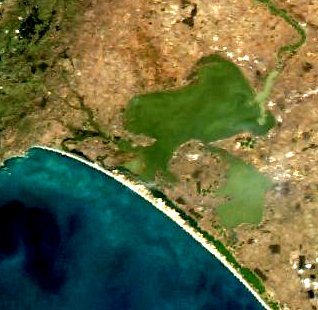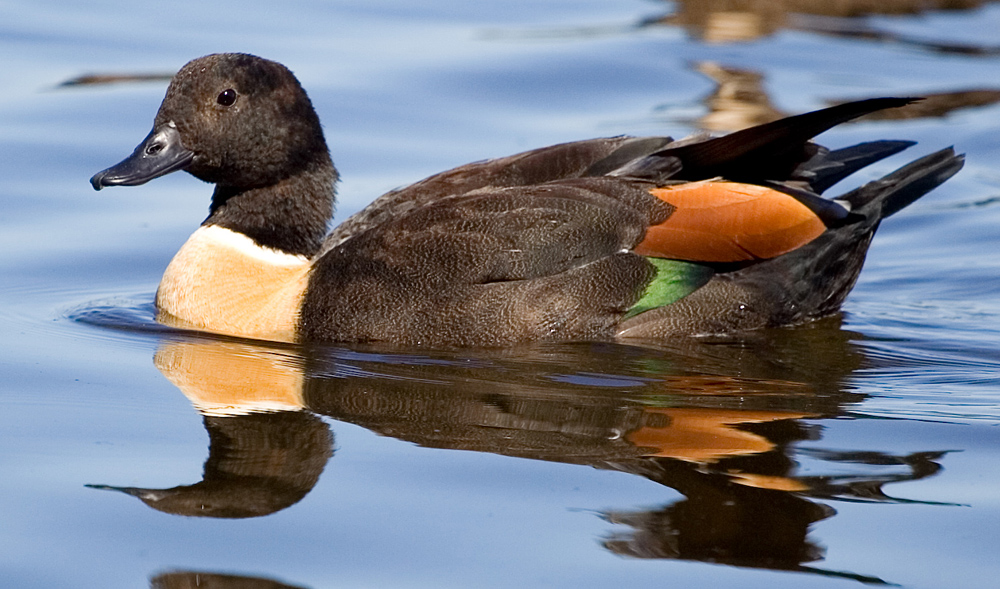|
Warki
The Warki are a ''lakalinyeri'' (tribe) of the Ngarrindjeri Australian Aboriginal people of southern Australia. Language The Warki spoke a dialect variety of Ngarrindjeri. Country The Warki traditionally inhabited the area around the north and western areas of Lake Alexandrina, from Grote Hill as far as Currency Creek. Norman Tindale estimated their lands at . They were also present on the eastern and western extremities of Hindmarsh Island. Social organization The Warki were composed of at least 8 clans * ''Korowalle'' Alternative names * ''Warkend'' * ''Wakend'' * ''Koraulun.'' ( Jarildekald exonym An endonym (from Greek: , 'inner' + , 'name'; also known as autonym) is a common, ''native'' name for a geographical place, group of people, individual person, language or dialect, meaning that it is used inside that particular place, group, ... for the Korowalle clan) * ''Milang dialect'' Notes Citations Sources * * * {{authority control Aboriginal peoples of ... [...More Info...] [...Related Items...] OR: [Wikipedia] [Google] [Baidu] |
Ngarrindjeri
The Ngarrindjeri people are the traditional Aboriginal Australian people of the lower Murray River, eastern Fleurieu Peninsula, and the Coorong of the southern-central area of the state of South Australia. The term ''Ngarrindjeri'' means "belonging to men", and refers to a "tribal constellation". The Ngarrindjeri actually comprised several distinct if closely related tribal groups, including the Jarildekald, Tanganekald, Meintangk and Ramindjeri, who began to form a unified cultural bloc after remnants of each separate community congregated at Raukkan, South Australia (formerly Point McLeay Mission). A descendant of these peoples, Irene Watson, has argued that the notion of Ngarrindjeri identity is a cultural construct imposed by settler colonialists, who bundled together and conflated a variety of distinct Aboriginal cultural and kinship groups into one homogenised pattern is now known as Ngarrindjeri. Historical designation and usage Sources disagree as to who the Ngarri ... [...More Info...] [...Related Items...] OR: [Wikipedia] [Google] [Baidu] |
Ngarrindjeri Language
The Ngarrindjeri people are the traditional Aboriginal Australian people of the lower Murray River, eastern Fleurieu Peninsula, and the Coorong of the southern-central area of the state of South Australia. The term ''Ngarrindjeri'' means "belonging to men", and refers to a "tribal constellation". The Ngarrindjeri actually comprised several distinct if closely related tribal groups, including the Jarildekald, Tanganekald, Meintangk and Ramindjeri, who began to form a unified cultural bloc after remnants of each separate community congregated at Raukkan, South Australia (formerly Point McLeay Mission). A descendant of these peoples, Irene Watson, has argued that the notion of Ngarrindjeri identity is a cultural construct imposed by settler colonialists, who bundled together and conflated a variety of distinct Aboriginal cultural and kinship groups into one homogenised pattern is now known as Ngarrindjeri. Historical designation and usage Sources disagree as to who the Ngarri ... [...More Info...] [...Related Items...] OR: [Wikipedia] [Google] [Baidu] |
Aboriginal Peoples Of South Australia
The Aboriginal South Australians are the Indigenous people who lived in South Australia prior to the British colonisation of South Australia, and their descendants and their ancestors. There are difficulties in identifying the names, territorial boundaries, and language groups of the Aboriginal peoples of South Australia, including poor record-keeping and deliberate obfuscation, so only a rough approximation can be given here. Its people The following groups' lands include at least partly South Australian territory which includes: Adnyamathanha, Akenta, Amarak, Bungandidj, Diyari, Erawirung, Kaurna, Kokatha Mula, Maralinga Tjarutja, Maraura, Mirning, Mulbarapa, Narungga, Ngaanyatjarra, Ngadjuri, Ngarrindjeri, Nukunu, Parnkalla, Peramangk, Pitjantjatjara, Ramindjeri, Spinifex people, Warki. Colonial intent The ''South Australia Act 1834'' described the land as "waste" and "uninhabited", but unlike other colonies in Australia, the British settlement of South Australia did not a ... [...More Info...] [...Related Items...] OR: [Wikipedia] [Google] [Baidu] |
Tribe
The term tribe is used in many different contexts to refer to a category of human social group. The predominant worldwide usage of the term in English language, English is in the discipline of anthropology. This definition is contested, in part due to conflicting theoretical understandings of social and kinship structures, and also reflecting the problematic application of this concept to extremely diverse human societies. The concept is often contrasted by anthropologists with other social and kinship groups, being hierarchically larger than a lineage or clan, but smaller than a chiefdom, nation or state (polity), state. These terms are equally disputed. In some cases tribes have legal recognition and some degree of political autonomy from national or federal government, but this legalistic usage of the term may conflict with anthropological definitions. In the United States, Tribe (Native American), Native American tribes are legally considered to have "domestic dependent ... [...More Info...] [...Related Items...] OR: [Wikipedia] [Google] [Baidu] |
Australian Aboriginal
Aboriginal Australians are the various Indigenous peoples of the Australian mainland and many of its islands, such as Tasmania, Fraser Island, Hinchinbrook Island, the Tiwi Islands, and Groote Eylandt, but excluding the Torres Strait Islands. The term Indigenous Australians refers to Aboriginal Australians and Torres Strait Islanders collectively. It is generally used when both groups are included in the topic being addressed. Torres Strait Islanders are ethnically and culturally distinct, despite extensive cultural exchange with some of the Aboriginal groups. The Torres Strait Islands are mostly part of Queensland but have a separate governmental status. Aboriginal Australians comprise many distinct peoples who have developed across Australia for over 50,000 years. These peoples have a broadly shared, though complex, genetic history, but only in the last 200 years have they been defined and started to self-identify as a single group. Australian Aboriginal identity has cha ... [...More Info...] [...Related Items...] OR: [Wikipedia] [Google] [Baidu] |
Australia
Australia, officially the Commonwealth of Australia, is a Sovereign state, sovereign country comprising the mainland of the Australia (continent), Australian continent, the island of Tasmania, and numerous List of islands of Australia, smaller islands. With an area of , Australia is the largest country by area in Oceania and the world's List of countries and dependencies by area, sixth-largest country. Australia is the oldest, flattest, and driest inhabited continent, with the least fertile soils. It is a Megadiverse countries, megadiverse country, and its size gives it a wide variety of landscapes and climates, with Deserts of Australia, deserts in the centre, tropical Forests of Australia, rainforests in the north-east, and List of mountains in Australia, mountain ranges in the south-east. The ancestors of Aboriginal Australians began arriving from south east Asia approximately Early human migrations#Nearby Oceania, 65,000 years ago, during the Last Glacial Period, last i ... [...More Info...] [...Related Items...] OR: [Wikipedia] [Google] [Baidu] |
Lake Alexandrina (South Australia)
Lake Alexandrina is a coastal freshwater lake located between the Fleurieu and Kangaroo Island and Murray and Mallee regions of South Australia, about south-east of Adelaide. The lake adjoins the smaller Lake Albert (together known as the Lower Lakes) and a coastal lagoon called The Coorong to its southeast, before draining into the Great Australian Bight via a short, narrow opening known as Murray Mouth. Nomenclature Aboriginal naming Aboriginal people having an association with the lake were reported as knowing it by such names as ''Mungkuli,'' ''Parnka'' and ''Kayinga.'' European naming English settlers named the lake after Princess Alexandrina, niece and successor of King William IV of Great Britain and Ireland. When the princess ascended the throne and took the name Queen Victoria, there was some talk of changing the name of the lake to Lake Victoria, but the idea was dropped. Description Lake Alexandrina is located north of Encounter Bay and east of Fleurieu Peninsu ... [...More Info...] [...Related Items...] OR: [Wikipedia] [Google] [Baidu] |
Currency Creek, South Australia
Currency Creek (postcode 5214) is a township and locality in South Australia on the western shore of Lake Alexandrina about 6 km north of Goolwa, beside a seasonal stream bearing the same name - Currency Creek - which flows into Lake Alexandrina. The locality includes the headland named Finniss Point which separates the mouths of Currency Creek and the Finniss River. History Parts of Lake Alexandrina near to Currency Creek were initially explored by Charles Sturt in an open boat in 1830 but he did not sight the creek. In December 1837, while exploring the Lake and Murray Mouth looking for other outlets to the sea, a party led by Thomas Bewes Strangways and Young Bingham Hutchinson discovered the waterway while using a whaleboat borrowed from the Encounter Bay fishery. The whaleboat, which in September 1837 had been sold off the schooner '' Currency Lass'' at Adelaide, bore the same name as its mother ship, and they named the creek in honour of this boat. They reported ... [...More Info...] [...Related Items...] OR: [Wikipedia] [Google] [Baidu] |
Norman Tindale
Norman Barnett Tindale AO (12 October 1900 – 19 November 1993) was an Australian anthropologist, archaeologist, entomologist and ethnologist. Life Tindale was born in Perth, Western Australia in 1900. His family moved to Tokyo and lived there from 1907 to 1915, where his father worked as an accountant at the Salvation Army mission in Japan. Norman attended the American School in Japan, where his closest friend was Gordon Bowles, a Quaker who, like him, later became an anthropologist. The family returned to Perth in August 1917, and soon after moved to Adelaide where Tindale took up a position as a library cadet at the Adelaide Public Library, together with another cadet, the future physicist, Mark Oliphant. In 1919 he began work as an entomologist at the South Australian Museum. From his early years, he had acquired the habit of taking notes on everything he observed, and cross-indexing them before going to sleep, a practice which he continued throughout his life, and which ... [...More Info...] [...Related Items...] OR: [Wikipedia] [Google] [Baidu] |
Hindmarsh Island
Hindmarsh Island (Ngarrindjeri: Kumerangk) is an inland river island located in the lower Murray River near the town of Goolwa, South Australia, Goolwa, South Australia. The island is a tourist destination, which has increased in popularity since the opening of the Hindmarsh Island bridge in 2001. Hindmarsh Island is south east of the Adelaide city centre, around a 1-hour and 15 minute drive. History Prior to European colonisation, the island was occupied by Ngarrindjeri peoples, many who were forcibly removed to Raukkan. 1830: The first European to set foot on Hindmarsh Island was Captain Charles Sturt. Sturt used the Island as a viewing point and from there he sighted the Murray Mouth. 1831: Captain Collet Barker surveyed the Murray Mouth but was killed by Indigenous Australians after swimming across the mouth. 1837: The island was named by Captain John William Dundas Blenkinsop after South Australia's first Governor of South Australia, Governor, Sir John Hindmarsh. ... [...More Info...] [...Related Items...] OR: [Wikipedia] [Google] [Baidu] |
Band Society
A band society, sometimes called a camp, or in older usage, a horde, is the simplest form of human society. A band generally consists of a small kin group, no larger than an extended family or clan. The general consensus of modern anthropology sees the average number of members of a social band at the simplest level of foraging societies with generally a maximum size of 30 to 50 people. Origins of usage in anthropology Band was one of a set of three terms employed by early modern ethnography to analyse aspects of hunter-gatherer foraging societies. The three were respectively 'horde,' 'band', and 'tribe'. The term 'horde', formed on the basis of a Turkish/Tatar word ''úrdú'' (meaning 'camp'), was inducted from its use in the works of J. F. McLennan by Alfred William Howitt and Lorimer Fison in the mid-1880s to describe a geographically or locally defined division within a larger tribal aggregation, the latter being defined in terms of social divisions categorized in terms of ... [...More Info...] [...Related Items...] OR: [Wikipedia] [Google] [Baidu] |




